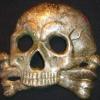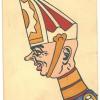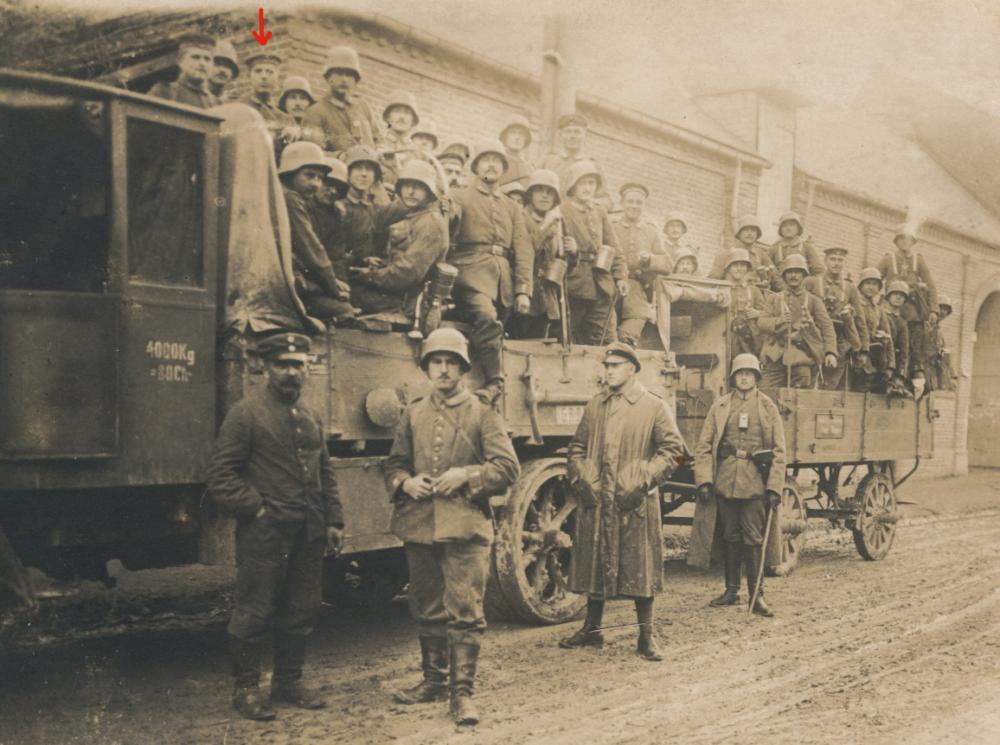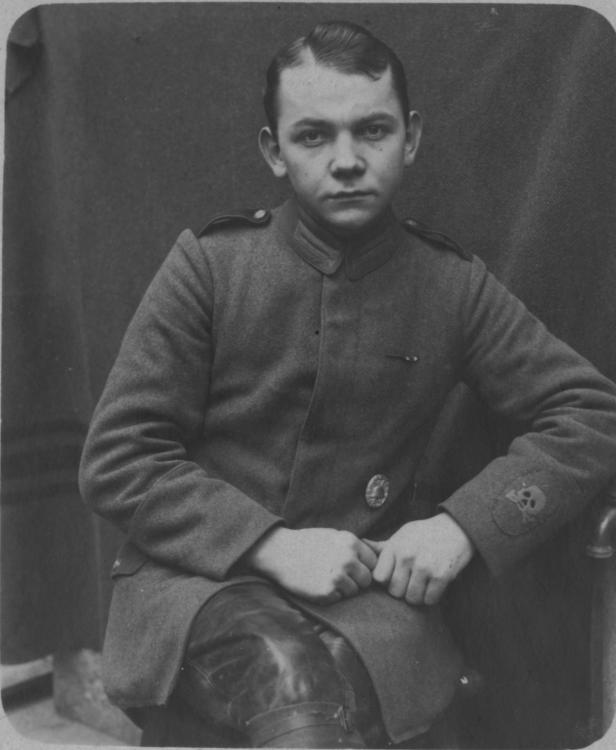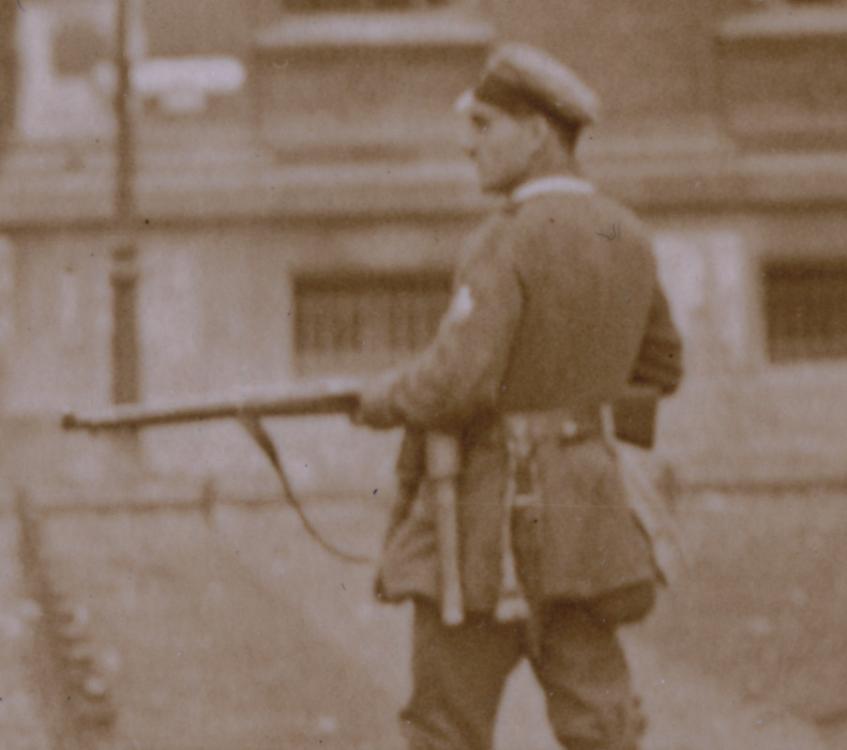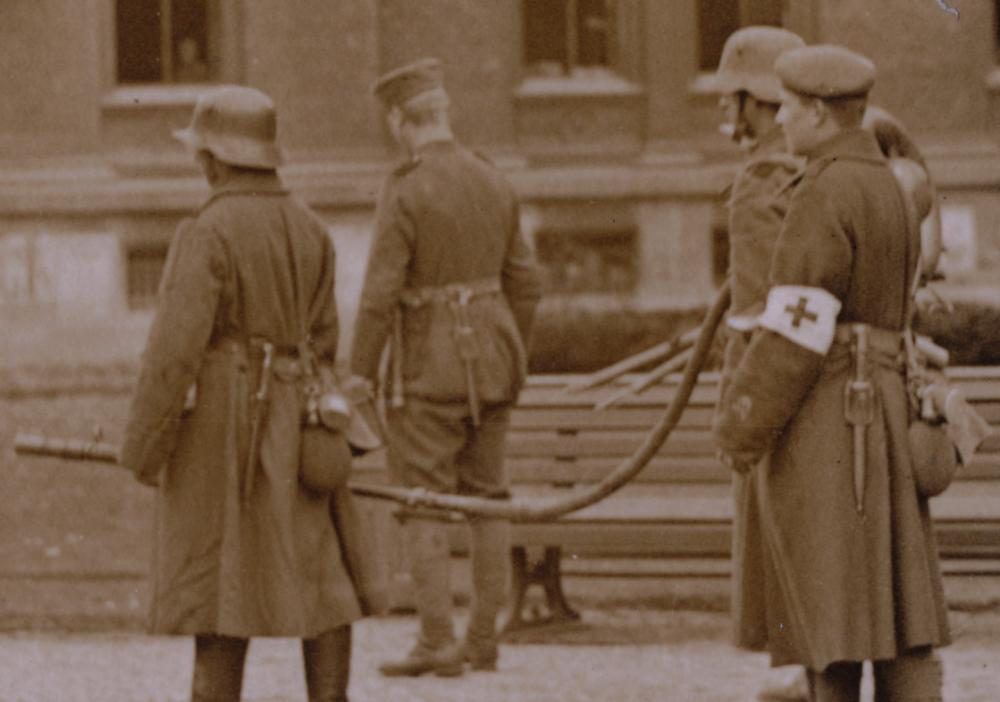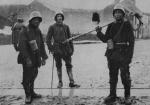
Thomas W
For Deletion-
Posts
788 -
Joined
-
Last visited
-
Days Won
3
Thomas W's Achievements
-
The son of a German flamethrower pioneer said that his father told him he was issued only one badge, I have postcards that say, "Got my new badge. I need to take care of it because they gave me only one." And the book Sturmtruppen und Flammenwerfer by Ludwig Charles Theune says that each pioneer had one uniform with Garde Litzen and badge and one "plain" uniform with neither. The badges were moved around a lot on the sleeve, depending on the unit. Each position signified a different unit. Photos show that the badges were often pinned in place rather than sewn, which indicates that they were taken off. If multiple badges WERE issued to the thousands of men who passed through the regiment, there would be a lot more in existence today. In every group photo of flamethrower pioneers wearing the badge, there are men without it. It's clear to me that the badge was something they took care of. Of the thousands of photos I own and have seen, so far I've come across only one on the greatcoat sleeve. In my desire to share this unique image, I forgot the ritual, that posting here requires that I run a gauntlet. It's not worth the price of admission. I'll keep my images to myself.
-
There's a lot of anecdotal evidence that the Allies summarily killed flamethrower operators, and I have one account of German infantrymen taken prisoner along with flamethrower pioneers. This British officer who wrote the account said that the German infantrymen asked the British to kill the flamethrower pioneers, because the latter always broke up live-and-let live arrangements and then left, causing the infantrymen to be shelled in retaliation. In this case, after the British refused to kill the flamethrower operators, the German infantrymen tried to do it, so the two groups were separated and brought back to the British trenches one at a time.
-
It's possible. In my entire collection, I have no other image of the Totenkopf on a greatcoat sleeve. The badge was so prized that men rarely wore it into combat. I have a handful of genuine combat photos of flamethrower pioneers, and only one shows some men wearing the badge. This photo was taken on December 28, 1916, as a platoon of the 2nd Company was about to assault the Dead Man in Verdun. The majority of the men in the photo wear uniforms without the sleeve badge. The red arrow shows Georg Lembke, Bob Lembke's father. This was his last battle as a flamethrower operator. He was wounded so severely that he was declared unfit for flamethrower duty and became a hand-grenade thrower. As Bob said, his father hated the steel helmet and wore his soft cap into combat instead.
-
What would constitute evidence that a person was not given something? A film of every second of their entire life? "What's more likely"? Hey, now you're arguing what I used to argue. You always used to shoot it down. I guess it's different when you do it. "It is sometimes easier to develop an opinion or theory based on what we find, instead of dismissing what we find because it does not fit an opinion." That's what I used to argue too! Son of a gun! Looks like you now agree with everything I once wrote, back when I tried to talk to you about it. Better late than never.
-
Again, you're not listening. I never said that Meyer was not a flamethrower pioneer. I was TOLD that he was a flamethrower pioneer, but all we know about him is that he made it to the replacement battalion. We have no evidence that he was a member of the Garde-Reserve-Pionier-Regiment. So the people who told me that he was a flamethrower pioneer ASSUMED it. They didn't base it on dog tags or documents. You're really, REALLY big on everything being fully documented or else it's just a "working theory." There's no documentation that Meyer was a flamethrower pioneer. Ergo, it's just a working theory. I posted the photo of the guy with the badge on his greatcoat sleeve so that people with an interest in the topic could enjoy it. As so often happens, it became an occasion for a fight instigated by you. How do you like your own rules of engagement used on you? Pretty unpleasant, isn't it? This is why I haven't posted here in ages. And why I won't post again. Who needs this? I can't even post one photo without being grilled, and then it turns out that the chef bases his own conclusions on ASSUMPTIONS. All that screeching about how what I say isn't well-enough documented, and then look who jumps to conclusions based on ASSUMPTIONS. Physician, heal thyself. Or grill thyself. On an open flame. Look: Officers with enlisted men's badges on cruddy, rough cloth. The experts would call these badge fake, yet here they are in a period photo. Debate among yourselves. I'm going back to collecting.
-
You're not listening, so I'll repeat. I was told that the two sleeve badges were from one flamethrower pioneer named Johann Meyer. In reality, two badges and a dog tag from a man who made it to the replacement battalion were found in one house. That's very different from "These two sleeve badges belonged to a flamethrower pioneer named Johann Meyer." So we'll call the notion that both badges came from a flamethrower pioneer named Johann Meyer a "working theory" and not a fact, okay?
-
Of course. That increases the value of the grouping. But I was told that the two badges belonged to a flamethrower pioneer named Johann Meyer. Instead it turns out that two badges and a disk from a man who made it as far as the replacement battalion were said to have have been found in the same house. That's quite a different story from the one I was told.
-
Thanks, Robin. I was under the impression that the badges were from a confirmed member of the flamethrower regiment. So there were two authentic badges, but there's no evidence that they belonged to the same man or that they belonged to Johann Meyer, since all we know about him is that he made it as far as the replacement battalion, where they didn't wear badges.
-
I don't know what you mean. Are you saying that Robin and Chip's badges both came from the same man? What was his name? Bob Lembke said his father was issued only one badge, which was cut off his sleeve by a French soldier. He had the badge replaced, and then his first wife threw it out after the war. Somewhere in my postcards I have a flamethrower pioneer talking about how he's got his new badge, and he has to take care of it because he received only one. Also, Sturmtruppen and Flammenwerfer by Ludwig Charles Theune says that each flamethrower pioneer has two uniforms, one with the flamethrower badge and one without. I have dozens of photos that show flamethrower pioneers wearing either a Garde Pionier uniform with no badge or a pioneer uniform with no badge and no Litzen. I also have a photo of a Feldwebel-Leutnant wearibng a pioneer uniform with no Litzen but a badge. The badge was an award, no different than a medal. Only one was issued. It could be replaced, though.
-
Two bizarre anomalies in one photo. Note the medic on the right. 1. He's got his Totenkopf on his OVERCOAT sleeve. Each man was issued only one badge. Maybe he was so proud of the death's head that he didn't mind tearing it off and resewing it on, depending on the season. I've never seen one on an overcoat before. 2. He's a medic. Normally medics were attached from the Medical Companies. A medic wouldn't have been trained on flamethrowers. It's possible that he's wearing the red cross brassard because he's simply been DEEMED a medic by the unit, but I've never seen medical personnel with a flamethrower badge.



